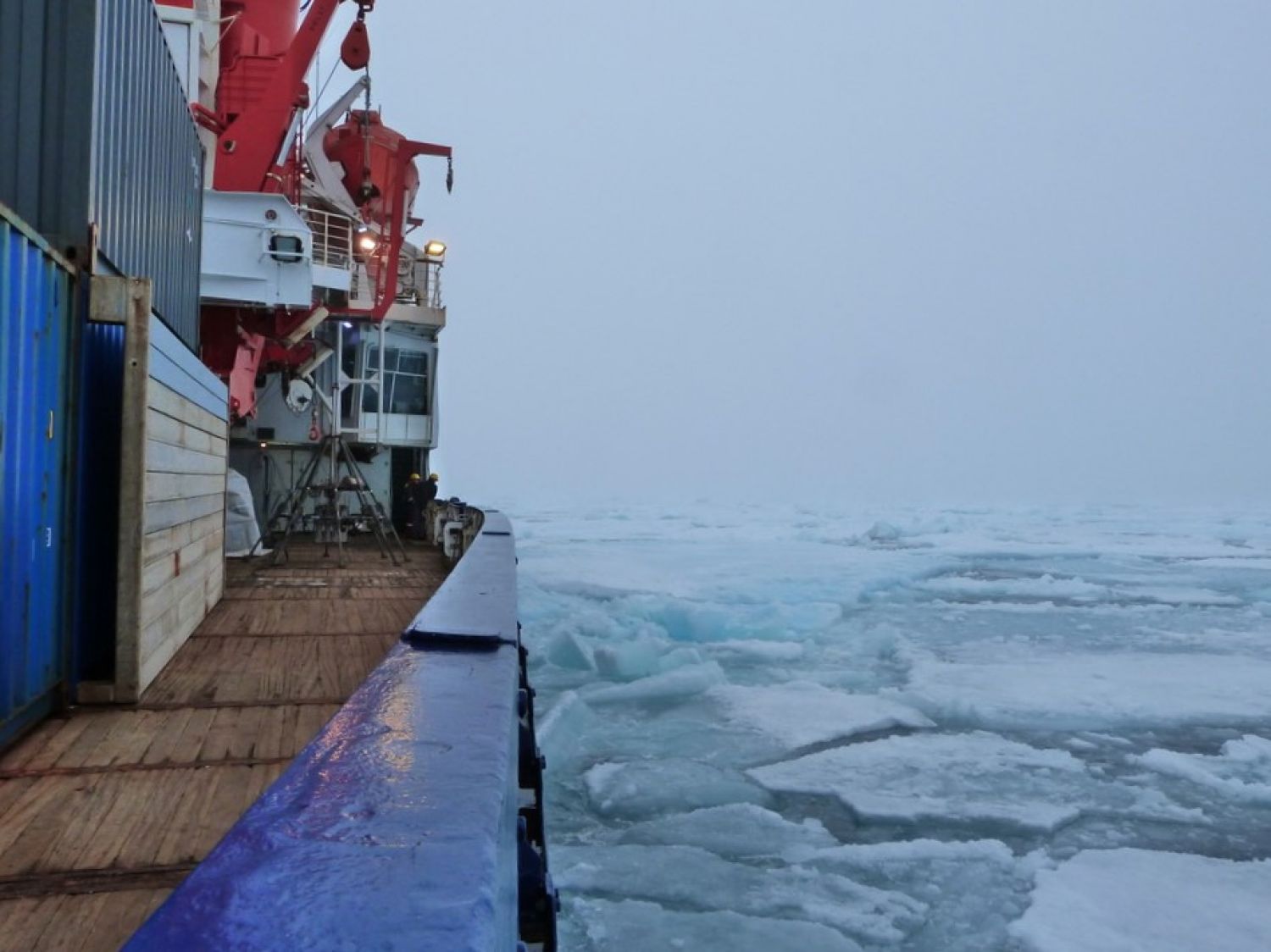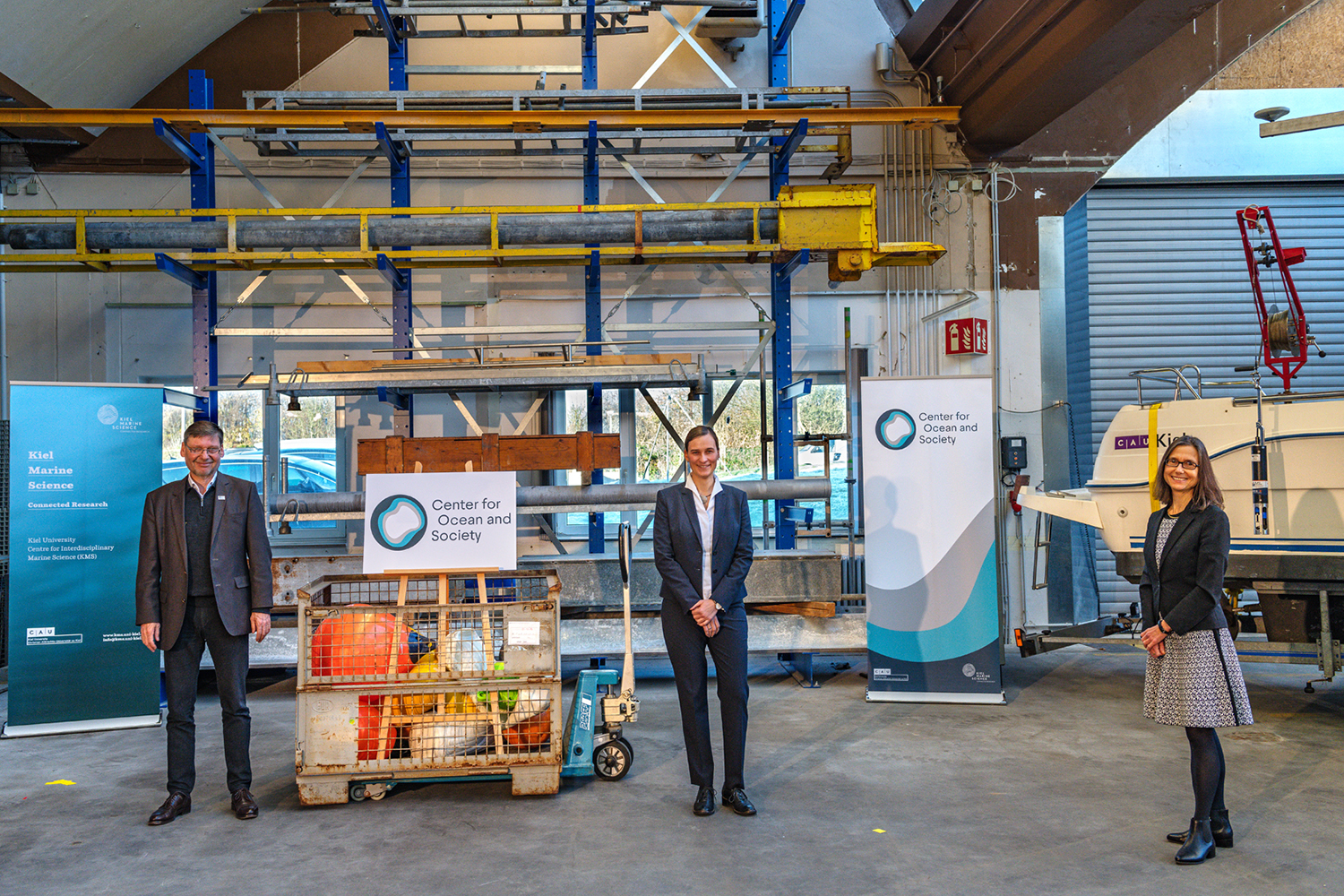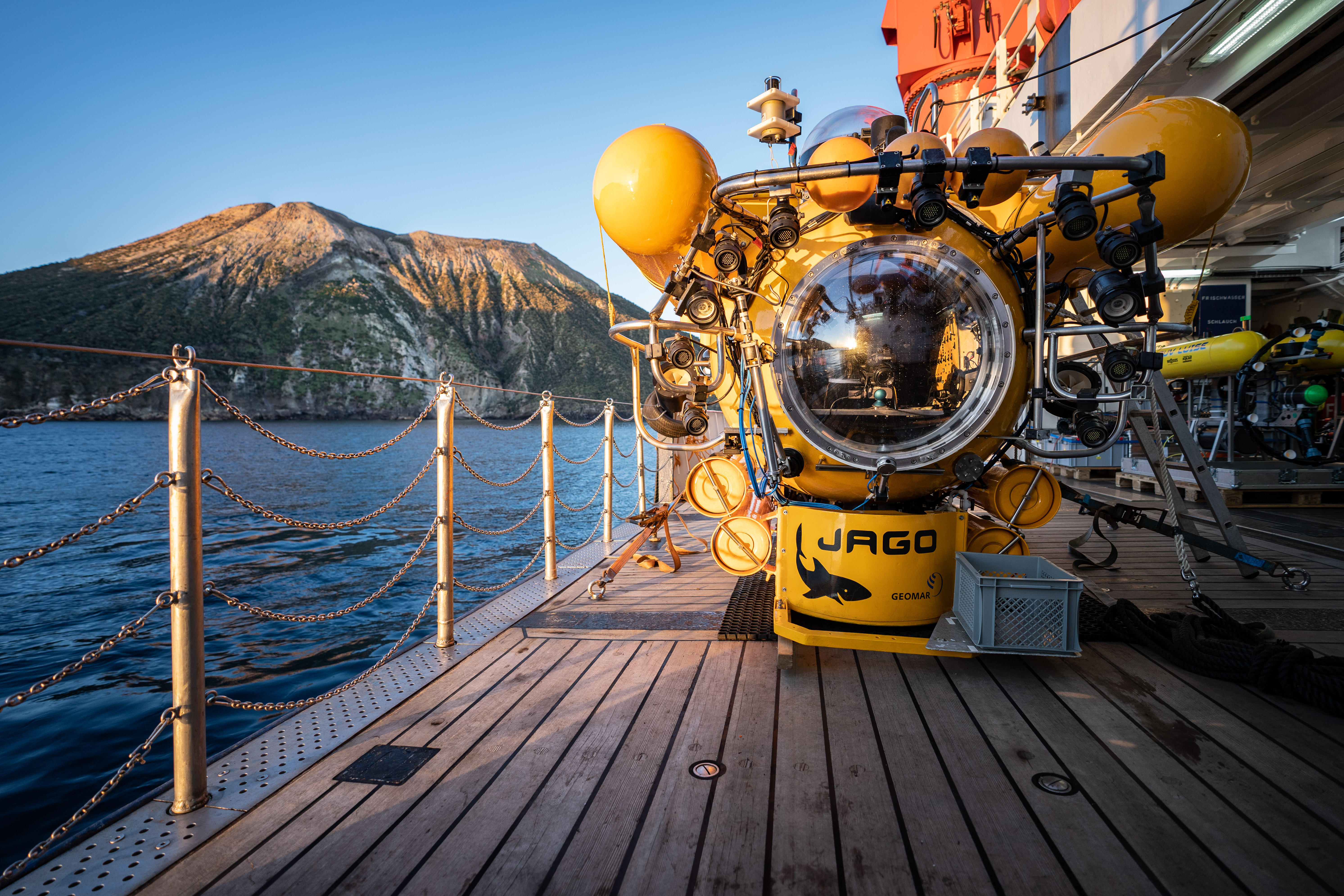The polar regions are particularly affected by climate change. However, extreme climatic conditions pose a challenge in understanding the rapidly changing environment as many areas are only safely accessible in summer. In an effort to understand the polar ecosystem, the Alfred Wegner Institute, Helmholtz Centre for Polar and Marine Research, Bremerhaven (AWI) operates the time series "HAUSGARTEN" west of Svalbard, which has been monitored every summer over the past 25 years. These samples are used to compare how much carbon is available for uptake and how active the microorganisms living in the seawater are.
Now a group of scientists from GEOMAR Helmholtz Centre for Ocean Research Kiel and AWI has investigated how the availability of dissolved carbon changes within one year. "We will only be able to compare measurements from different years if we understand the variability of dissolved carbon within an annual cycle", explains Anabel von Jackowski, doctoral researcher and first author of the study, which has now been published in the international journal Philosophical Transactions of the Royal Society A. This is one of the first studies ever to deal with seasonal fluctuations for the Arctic region west of Svalbard. For this purpose, the team conducted two expeditions in 2018: one in July and one in September to October. In summer, the research vessel POLARSTERN took the annual samples for the time series. In autumn, additional samples were taken during a second trip with the MARIA S. MERIAN, which were then compared with those from the summer.
"Our results show a two-fold decline in the concentrations of dissolved carbon in seawater from summer to autumn", von Jackowski explains. As the Arctic approaches the polar night, phytoplankton no longer receive enough light to form a phytoplankton bloom and subsequently release less dissolved carbon. This directly impacted the activity and abundance of microorganisms. According to the researchers, these microbial factors are mainly regulated by the available carbon, however temperature could also play a minor role. Although the scientists cannot rule out possible synergisms, there is no doubt that the carbon cycle will change due to climate change. At present, the Arctic acts as a carbon sink by absorbing and storing more carbon, e.g. like carbon dioxide, from the atmosphere than it releases. However, this could change in the future with higher ocean temperatures. This is another reason why it is important to understand seasonal fluctuations.
"Our study pinpoints the importance of temporal variability in microbial processes within the Arctic and the need to understand the seasonal shifts in such sensitive environments in order to decipher the effects of climate change," summarizes Prof. Dr. Anja Engel, lead investigator of the "Micro-Arc" project from GEOMAR. The study was conducted as part of this German-British project and closes an important knowledge gap. Although there have been North American projects that have attempted to answer the seasonal fluctuations of microbial processes in the Arctic, their focus was on spring-summer and in regions other than those covered by this study. Therefore, the study is a crucial new component for understanding the processes in the Arctic.
Reference
von Jackowski, A., J. Grosse, E.-M. Nöthig, and A. Engel (2020): Dynamics of organic matter and bacterial activity in the Fram Strait during summer and autumn. Phil. Trans. R. Soc. A, 378: 20190366, http://dx.doi.org/10.1098/rsta.2019.0366
Links
www.geomar.de/en Das GEOMAR Helmholtz-Zentrum für Ozeanforschung Kiel
https://www.awi.de/en/science/biosciences/deep-sea-ecology-and-technology/observatories/lter-observatory-hausgarten.html LTER Observatorium HAUSGARTEN
https://www.changing-arctic-ocean.ac.uk/project/micro-arc/ Micro-Arc
Contact
Marie Gundlach (GEOMAR, Kommunikation & Medien)
Tel.: +49 431 600-1816
presse@geomar.de
…



